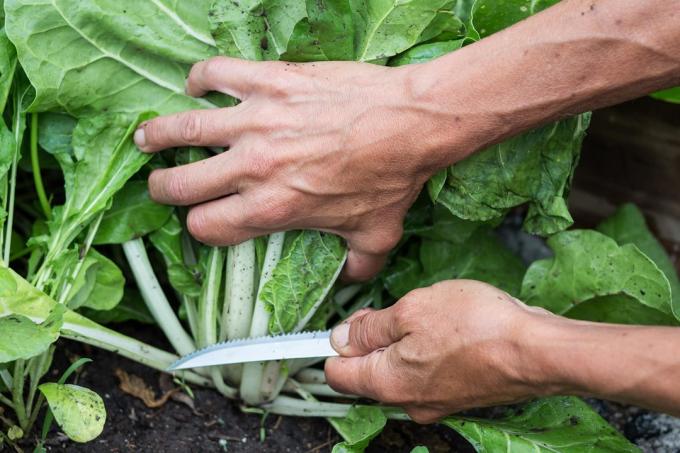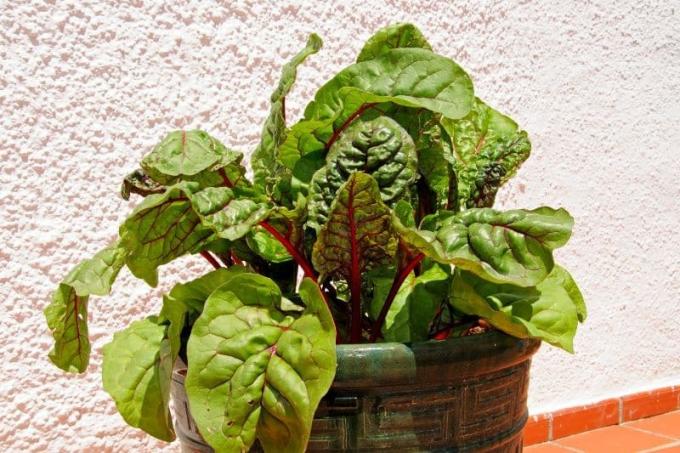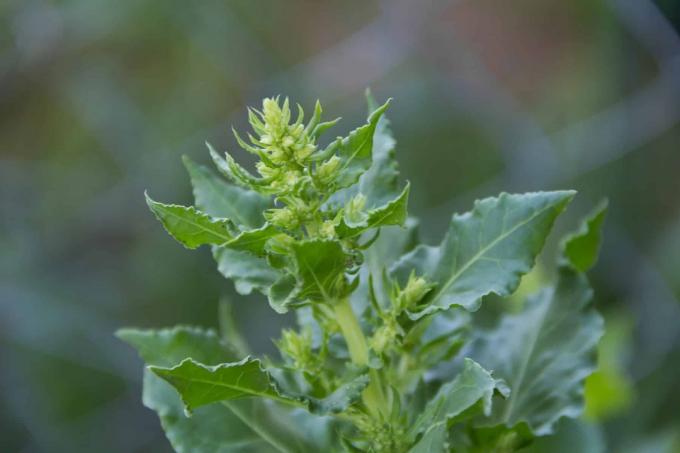
Swiss chard is a valuable vegetable that has been unjustly forgotten, but are stem chard and leaf chard even hardy in our latitudes and how do they overwinter?
In a nutshell
- leaf chard good winter hardiness
- In the case of Swiss chard, depending on the variety
- Hibernation outdoors with shelter
- Protect potted plants in particular
Table of contents
- Instructions for wintering
- In the bed
- In the bucket
- After a successful hibernation
- Swiss chard overwinter for seed production
- frequently asked Questions
Instructions for wintering
Chard is a biennial, conditionally hardy plant. Already in the first year stems and/or leaves can be harvested until late autumn. However, there are differences in terms of hardiness. With stem chard, the green- and white-stemmed varieties are the most frost-tolerant, while the yellow- and red-stemmed varieties are only moderately hardy. The leaf chard, on the other hand, has good frost tolerance and can also spend the winter unprotected outdoors in mild locations. Without appropriate protection, this is not possible in particularly cold locations and especially with Swiss chard.

In the bed
- Prune plants to five inches off the ground
- Leave your heart and buds untouched
- cover remaining remnants of the plant (stick).
- suitable for: brushwood, leaves, straw, fleece or a layer of mulch
- If there is a risk of frost, pile up stems and leaves with sandy soil
- additionally cover with brushwood, straw or leaves

If you move leaf chard to a greenhouse in the fall, if you have one, you may be lucky enough to be able to harvest chard all winter long. Swiss chard can also be harvested outdoors as long as the ground is not frozen.
Drying cold can also be problematic for leaf chard. Therefore, it often makes sense to cover it with fleece on very cold nights.
In the bucket
Container plants are generally more sensitive to frost than those planted in beds. Swiss chard is no exception, because the soil in the pot or bucket can quickly freeze completely if the frost persists and, in the worst case, cause the plants to die. In order to prevent this, they must be protected accordingly.

Protection can look like this:
- Place the bucket in a sheltered place that is as draught-free as possible
- Prune plants heavily before winter
- Cover buckets with insulating materials
- with fleece, jute or bubble wrap
- also cover remaining aerial parts of the plant
- with brushwood or fleece
- Place the bucket on a base away from the ground
- protects roots from ground frost
After a successful hibernation
If the chard has survived the winter well, it can be harvested again in the second year if the plants receive the necessary support:
- Depending on the weather, remove the cover again from the beginning of March
- supply plants with nutrients
- for example horn shavings incorporate
- Plant specimens in the pot in fresh vegetable soil
- then administer suitable liquid fertilizer
Accordingly well cared for, the chard quickly sprout again and can be harvested fresh from March to June. In the summer of the second year, however, he soon begins to shoot or. to flower, then it becomes inedible and should no longer be eaten. Now the seeds can be harvested for the next season.
Swiss chard should not be planted again at the same location for three years at the earliest. Even during a season, he shouldn't be in the same place twice.
Swiss chard overwinter for seed production
Successful overwintering is a prerequisite for harvesting the pea-sized, ball-like chard seeds. They will the bloom formed, after which the plant dies. Mangold usually velvets itself. But since next year it should be in a different place, it is better to harvest the seeds and sow them in a more suitable place when the time comes.

Harvesting chard seeds is very easy, but there are a few basic things to keep in mind:
- Seeds are attached directly to the stems
- easy to see when stems are completely dry
- Seeds only now mature
- can be easily wiped off by hand
- sometimes fall off by themselves
- Leave to air dry for two to three days
- then place in an airtight container
- keep in a dark place until sowing

It is important to ensure that the plants or Seeds are not so-called F1 hybrids, because these plants are not seed-fast, i. H. their offspring can have completely different characteristics than the parents they came from. Unfortunately, mostly F1 hybrids are offered in the trade, but this must be marked accordingly on the seed packets.
You can also use the chard seeds for an earlier harvest prefer in the house.
frequently asked Questions
When harvesting, the most important thing is not to cut off or injure the heart of the plants, but always to harvest from the outside. Otherwise no new leaves can follow. In addition, you should only ever harvest as much as you can use in a timely manner, because fresh chard does not keep.
Leaf chard, also known as cut chard, is usually ready to harvest after about ten weeks and stick chard, also known as ribbed chard, after about eight weeks.
Freshly harvested chard has a very short shelf life. It is best to wrap it in a damp cloth immediately after harvest and place it in the fridge. So it stays fresh for a few days.
This is not absolutely necessary, but in principle possible. You cut the plant down as already described and practically overwinter the stick. To do this, place it in a pot or box with a slightly damp substrate, such as coconut fibers or wood shavings. The whole thing is then placed in a cool but frost-free and dark place, for example an unheated basement or garage.
